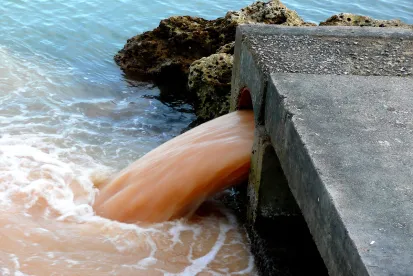Yesterday’s ruling by the U.S. District Court for the District of North Dakota creates a regulatory patchwork across the nation in which the definition of ‘waters of the United States’ (WOTUS), and subsequently, the jurisdiction of the Clean Water Act, now differs by state. For example, West Virginia and Pennsylvania currently having different WOTUS definitions. On Wednesday, April 12, the North Dakota district court granted a preliminary injunction that halted the implementation and enforcement of the Biden administration’s new definition of WOTUS (2023 Rule) in the following 24 states: Alabama, Alaska, Arkansas, Florida, Georgia, Indiana, Iowa, Kansas, Louisiana, Mississippi, Missouri, Montana, Nebraska, New Hampshire, North Dakota, Ohio, Oklahoma, South Carolina, South Dakota, Tennessee, Utah, Virginia, West Virginia, and Wyoming.
The 2023 Rule became effective on March 20, 2023 in 48 states. A March 19, 2023 preliminary injunction in the U.S. District Court for the Southern District of Texas had already enjoined the new WOTUS definition in Texas and Idaho.
In granting the preliminary injunction, the North Dakota district court had harsh criticism for the 2023 Rule, noting that “the new 2023 Rule is neither understandable nor ‘intelligible,’ and its boundaries are unlimited.” It also stated that the 2023 Rule “raises a litany of other statutory and constitutional concerns.” The district court went further to state that the changing definitions of WOTUS “have created nothing but confusion, uncertainty, unpredictability, and endless litigation.”
At present, the 1986 definition of WOTUS is effective in 26 states and the 2023 Rule is effective in 24 states, creating a nationwide split in how the jurisdiction of the Clean Water Act is interpreted. This split is expected to create further uncertainty as to how the U.S. Environmental Protection Agency (USEPA) and U.S. Army Corps of Engineers (Corps) will delineate WOTUS and permit impacts to WOTUS, especially when, for example, a Corps District includes states with differing definitions.
A third judicial challenge to the 2023 Rule is pending. Last week, the U.S. District Court for the Eastern District of Kentucky denied a motion for preliminary injunction brought by the state and a number of industry groups after determining that they did not currently have standing. The decision is being appealed.
It is unclear whether additional judicial actions will be taken in advance of the highly-anticipated U.S. Supreme Court decision in Sackett v. EPA, which will opine on whether the Ninth Circuit set forth the proper test to determine whether wetlands are WOTUS. The Supreme Court’s decision may significantly affect USEPA’s ability to define WOTUS.
A similar split in the definition of WOTUS occurred when President Barack Obama introduced his administration’s definition of WOTUS in 2015 (referred to as the Clean Water Rule (CWR)). At that time, the North Dakota district court preliminarily enjoined the definition in 13 states, with other judicial actions resulting in the CWR being enjoined in a total of 29 states for a short period of time in 2019. Ultimately, the Trump administration repealed the CWR in its entirety, reverting back to the 1986 definition nationwide.
Babst Calland will continue to stay up-to-date on the developments related to WOTUS and the Clean Water Act, in general.




 />i
/>i

